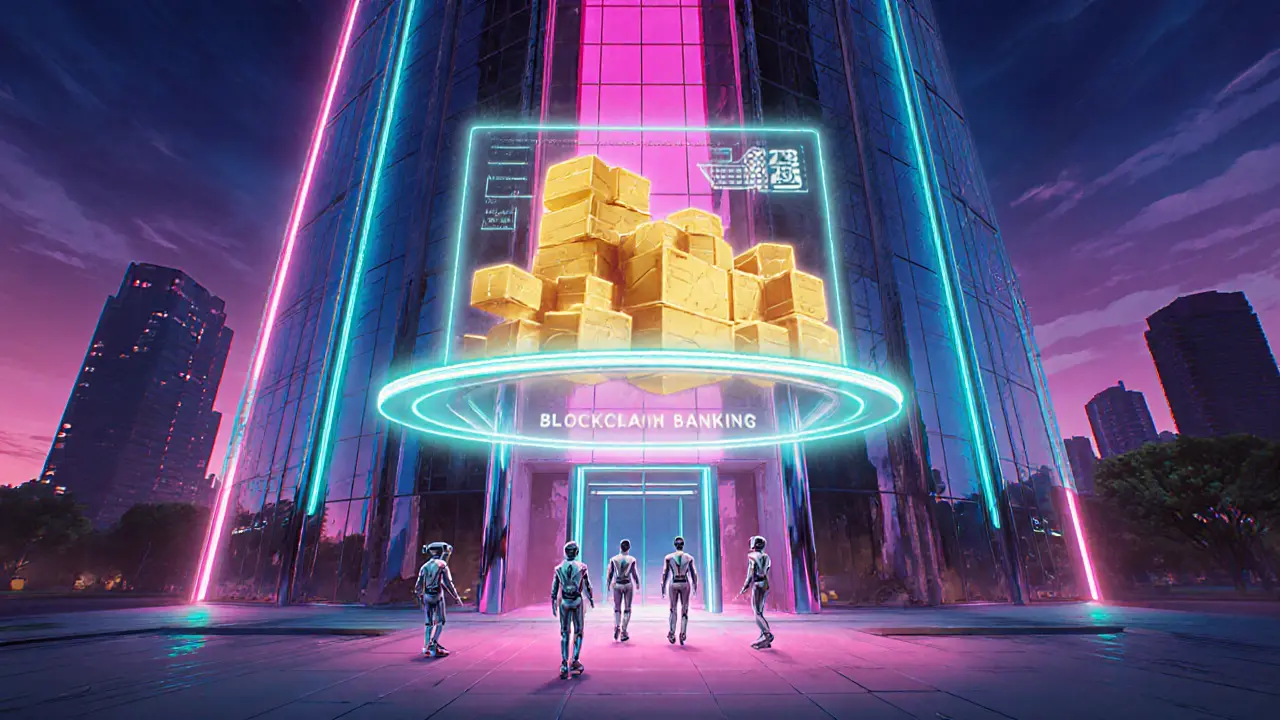Blockchain Banking Services
When you hear blockchain banking services, you’re looking at financial solutions that use blockchain technology to replace or augment traditional banking functions. Blockchain banking services, a suite of products like crypto‑backed loans, decentralized wallets, and cross‑border payment networks that run on distributed ledgers aim to give users faster, cheaper, and more transparent access to money. This tag pulls together posts that break down the mechanics, regulatory angles, and real‑world use cases.
Why Blockchain Banking Services Matter
One key piece of the puzzle is blockchain bridges, protocols that move assets between separate blockchains while preserving security and value. Bridges can be trusted (relying on a custodial party) or trustless (using smart contracts). Blockchain banking services encompass these bridges because they let a user send funds from a Bitcoin ledger to a DeFi platform on Ethereum without leaving the banking workflow. The design choice directly influences speed, fees, and risk exposure.
Another essential ingredient is on‑chain data mining, the process of extracting, cleaning, and analyzing transaction data stored on a blockchain. Banks that adopt blockchain need this capability to assess credit risk, detect fraud, and comply with anti‑money‑laundering rules. In practice, blockchain banking services require on‑chain data mining to turn raw ledger entries into actionable insights, such as spotting a sudden influx of large transfers that could signal market stress.
Location still matters. crypto‑friendly jurisdiction, countries or regions with clear tax rules, supportive regulation, and access to banking infrastructure for crypto businesses can make or break a blockchain‑based banking model. Choosing the right jurisdiction influences everything from licensing costs to the ability to open corporate bank accounts. Blockchain banking services benefit from jurisdictions that allow seamless fiat on‑ramps, reducing friction for users who need to move money in and out of the crypto world.
Underlying all of this is the concept of disintermediation, the removal of middlemen like traditional banks or payment processors through decentralized technology. By cutting out these layers, blockchain banking can lower costs, increase speed, and give users direct control over their assets. This shift influences how services are designed, pushing providers to build transparent fee structures and self‑custody options that were previously impossible.
Below you’ll find a curated mix of deep‑dive articles, how‑to guides, and regulatory snapshots that together map the entire ecosystem of blockchain banking services. Whether you’re hunting for a step‑by‑step bridge setup, a data‑mining toolkit, or a checklist for picking a crypto‑friendly jurisdiction, the posts here give you actionable knowledge to design, evaluate, or improve your own blockchain‑enabled financial products.
Ready to explore the details? Scroll down to discover practical insights, real‑world reviews, and strategic frameworks that will help you navigate the fast‑evolving world of blockchain banking services.
A clear guide to blockchain banking services, covering how they work, key applications, benefits, challenges, real‑world examples, and future trends.
More